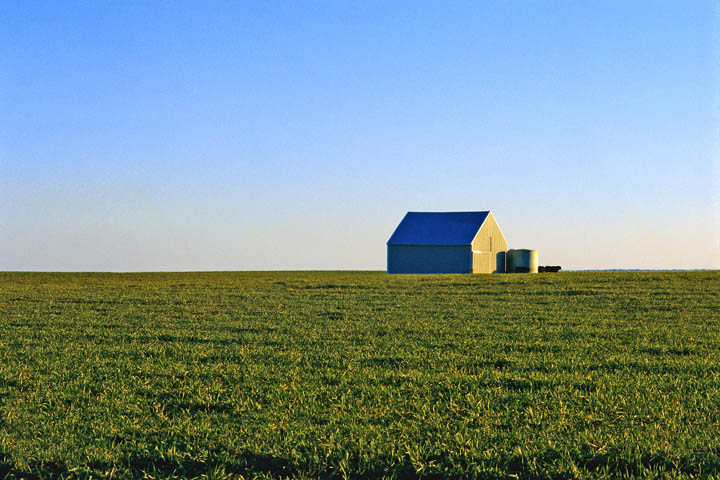November 8, 2010

Rural America is leading the recovery of the U.S. economy.
That’s not unusual, said Jason Henderson, vice president, Federal Reserve Bank of Kansas City – Omaha Branch.
Henderson, a keynote speaker at the Rural Economic Outlook Conference on the Oklahoma State University Campus in Stillwater, said rural America was the first to come out of the last two recessions.
So far, signs of a recovery are slight, with only a 2 percent growth in gross domestic product for the third quarter, but a 3 percent growth forecast by mid-year 2011. That 3 percent level is a positive or a negative, depending on point of view.
Henderson said the annual rate of growth since World War II has averaged 3 percent, but that level is “below expectations. So, do we focus on the short-term or the long-term?” He said a mentor once told him: “If we take care of monetary policy in the long-term, the short-term takes care of itself.”
Current growth is stymied by a summer slowdown. “Consumer spending was down from March and April.” February snowstorms that slowed sales may have spurred early spring spending. “What happens during Christmas this year,” will be crucial, he said.
Housing may be bumpy
Housing has dipped following the end of the tax credits and Henderson said the bottom of the housing market “may be bumpy. A lot depends on incomes.”
“Businesses are strong. They have a lot of cash, but they are not making investments. Just like farmers make do with duct tape and baling wire, businesses are just covering the basic needs, increasing productivity but not building.”
That cautious approach comes from uncertainty — about the extent of the recovery, regulations and policies. “They don’t know what sales will do. They also are concerned about health care costs and regulations. They need stability, so they are not engaging, just waiting.”
Net export had also declined the last two quarters, spurred by higher crude oil prices. And debt weighs on the economy. “Debt could reach 150 percent of GDP by 2050,” Henderson said. “With higher interest rates, that could be 300 percent of GDP.
“We have some big decisions to make as a society. We’ve made promises to ourselves and now we have to decide on how to fund those promises or limit benefits. It’s a political question. We also need to invest in infrastructure (roads, bridges, electrical grids).”
All about jobs
The economic recovery is all about jobs, Henderson said, and employment looks better in rural areas.
The good news? The U.S. added 150,000 jobs in October. “The private sector is beginning to add jobs.” Those 150,000 new jobs include 159,000 from the private sector, offset by a loss of 7,000 to 8,000 from government. “Summer job numbers were skewed by census workers.”
Recent reports also indicate wages are up slightly and that the work week is slightly longer.
“The unemployment rate in rural America remains below urban areas. Rural America is leading job growth. Goods production is strong in rural areas, weak in urban. Service jobs are also better in rural areas.”
Strong farm income
A strong farm income is responsible for much of that strength. “Farm income is up 24 percent and reports in November probably will look even better.”
That strong farm income means more rural sales activity. “Farmers buy equipment. Farmers spend money.”
Challenges remain for rural America as state and local government funds are stretched. “Rural counties depend on a greater share of state and local government spending. Cuts will hurt.”
The recent Federal Reserve decision to buy $600 billion in treasury bonds is intended to bring down treasury yields and keep interest rates low “to stimulate investments and economic activity.”
A side effect of buying treasury bonds will be a lower dollar value. “When the value of the dollar goes down, the price of commodities goes up. That provides opportunities for agriculture and energy. The challenge is that input costs also will go up. A strong global economy will boost energy prices and the global demand for crude oil will outpace global production.”
Energy costs
Natural gas may take some of the load. “There is a wedge between gas prices and oil. That wedge will not last forever, but if it remains long-term, users will switch from gasoline to natural gas. But that will require infrastructure change.”
He said for rural America to continue to prosper it must “recognize that the consumer is king.” And that consumer is coming more and more from developing nations. “In 2008, almost half the world population survived on $2.50 a day. At $2.50 a day, most hunger problems are solved and people start improving their diets with protein.”
In the near future microwave ovens will be in high demand across the globe. “How will that change food markets? We will begin to ship higher value, processed foods, but the United States will not be the only country competing for those markets.”
Henderson said economic development “is about people ... Small rural counties really struggle. Generation X residents tend to leave at 19 years of age. When they get to their mid-30s and have families a few come back. But the counties that are able to bring in more middle-age families have better economies.” He believes rural America should encourage a pattern of leave, learn and return.
Rural America also needs to “boast about successes and the opportunities that exist. We need new skills. Companies moving in also want good schools, quality health care and opportunities for recreation.”
You May Also Like




